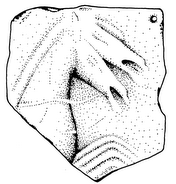1st INTERNATIONAL SYMPOSIUM- CALL FOR ABSTRACTS
STYRIA GAIA
The Archaeology of Styra & Southern Euboea STYRIA GAIA
Styra, 3-5 July 2009
Organization: Styra Municipality & University of the Aegean
Styra and Southern Euboea contain a rich history but yet mysterious and unexplored archaeological material. Within the frame of showing up of the cultural heritage and the reinforcement of cultural tourism in Styra and Southern Euboea the Municipality of Styra organizes the 1st International Symposium about Styra and Southern Euboea in 2009. The aim of this symposium is to bring together experts to present new archaeological findings and relevant information from their archaeological studies in the region between Eretria and Karystos related to cultural materials and ways of cultural management and presentation of monuments, artifacts and palaeolithic finds for the benefit of the residents, the regional economy and the visitors. New light will be shed on the unknown history of the region including, settlements and settlers, ancient culture and activities of past human societies, flora and chlora, the natural environment, all interacted in the triptych people- culture- environment. The Symposium’s thematics include: - archaeology since palaeolithic times to Byzantine period - palaeontology – palaeoanthropology - Folklore - ancient environment - archaeometry (the natural sciences in the study of cultural heritage) - museology for the region - ancient history - settlement intercommunication - ancient harbours - settlers and colonists - archaeogeomorphology - Dragon Houses and ancient Quarries - Cave studies.
The Municipality of Styra intents to publish the proceedings as a special issue of the international journal Mediterranean Archaeology & Archaeometry (www.rhodes.aegean.gr/maa_journal).
Accommodation
All participating speakers are covered for accommodation and meals by the Municipality of Styra.
Abstracts
A summary of the proposed oral presentation should be prepared and submitted to liritzis@rhodes.aegean.gr not later than 30th of January 2009
Organising Committee
Sophia Moutsou (Mayor of Styra) Panagiotis Mitropetros, Philologist Akrivi Leka, Envir. Eng. Ass.Prof Yiannis Zervas, Univ. of Athens Dr Nicolas Zacharias, Univ of Peloponesse Gerasimos Artelaris, PhD Cand. Dr George Polymeris, Physicist Secretariat: Municipality of Styra (styra@hol.gr; tel 22240-29280).
Scientific Committee
Ioannis Liritzis, prof at the University of the Aegean- scientific coordinator Dr Ioannis Bassiakos, NCPR Demokritos Prof. Pierre Ducrey, Director Swiss School of Archaeology Dr Sylvian Fachard, Scientific Secretary, Swiss School of Archaeology Dr Rozina Kolonia, Ephor, 11th Dept of Antiquities, Chalkis Prof. Don Keller, Boston University Prof. Eirene Lemos, Oxford University Prof. Nikolaos Moutsopoulos, Aristotle Univ of Thessaloniki Prof.Petros Themelis, Univ. of Crete Prof George Theodorou, Univ of Athens




